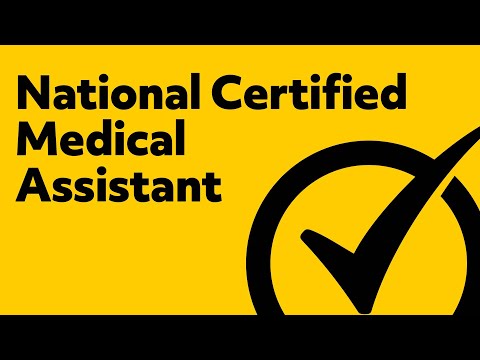What is the Role of a Medical Assistant?
Contents
Medical assistants perform many important duties in doctor’s offices, clinics and other healthcare facilities. They are often the first person a patient sees when they come in for a visit.
Checkout this video:
Job description
A medical assistant is a healthcare professional who performs a variety of clinical and administrative tasks in a medical office or clinic. The job description of a medical assistant can vary depending on the size and scope of the healthcare facility, but typically includes taking patient vital signs, recording medical histories, scheduling appointments, answering phone calls, and performing basic lab tests. Some Medical assistants also take X-rays and provide direct patient care such as giving injections or removing stitches. Medical assistants must be proficient in both clinical and administrative tasks in order to effectively support the work of physicians and other healthcare providers.
Duties
The duties of a medical assistant vary from office to office, but there are some common tasks that are usually performed by medical assistants. Most medical assistants work in outpatient facilities, such as physician offices and clinics. In these settings, medical assistants typically perform both clinical and administrative tasks.
Clinical duties may include taking patient histories and recording vital signs, assisting with physical examinations, explaining treatment procedures to patients, preparing patients for laboratory tests, performing basic laboratory tests on-site, scheduling appointments, and assisting with minor surgical procedures. Medical assistants may also give injections under the supervision of a physician.
Administrative duties may include answering telephones, greeting patients, updating and filing patient medical records billing and coding insurance forms, handling correspondence, scheduling appointments, handling accounts receivables and bookkeeping. With experience and additional training, some medical assistants may specialize in areas such as coding and transcribing physicians’ notes from Medical records or in managing a facility’s business office.
Qualifications
Medical assistants perform many important duties in physician’s office including: taking and recording patient’s medical history, measuring vital signs, charting in the patient’s record, answering telephone calls and scheduling appointments. They also may perform minor office surgical procedures, give injections and remove sutures. Some medical assistants take x-rays and process insurance forms.
Most states do not require certification for medical assistants, although employers prefer to hire those who have it. Certification for medical assistants demonstrates to employers that an individual has the necessary skills and knowledge to perform the job correctly. There are several organizations that offer certification for medical assistants, including the American Association of Medical Assistants and the National Healthcare Association.
Training
Medical assistants are multi-skilled health professionals specifically trained to work in outpatient facilities such as medical offices and clinics. Their training encompasses a wide variety of office and clinical duties, including but not limited to:
•Taking patient medical histories
•Recording vital signs
•Administering injections and medications
•Preparing patients for X-rays, lab tests and other diagnostic procedures
•Coding and filing insurance forms
•Assisting the physician during examinations
•Collecting and processing lab specimens
Medical assistants must be able to perform these tasks with compassion, competence and utmost confidentiality. They are an important member of the healthcare team, working collaboratively with physicians, nurses and other health professionals to provide quality patient care.
Salary
The Bureau of Labor Statistics lists the median annual salary for medical assistants as $34,800 in May 2017, with the top 10 percent earning more than $49,560. Pay can vary based on factors such as years of experience, location, and the size and type of facility where you work. Many medical assistants earn salaries that are comparable to those of other entry-level health care positions such as dental assistants and veterinary technicians.
Job outlook
Medical assistants are in high demand. The Bureau of Labor Statistics projects that employment of medical assistants will grow 19% from 2019 to 2029, much faster than the average for all occupations.1 This growth is due to several factors: an aging population, advances in medical technology, and an increasing number of Group Practices (especially those using electronic health records) which require the assistance of medical assistants.
There are many reasons to become a medical assistant. Medical assistants perform a variety of administrative and clinical tasks to keep the offices of physicians, podiatrists, chiropractors, and other health practitioners running smoothly. Their duties vary with the location, specialty, and size of the practice. They typically do the following:
Answering phones
Scheduling appointments
Handling correspondence
Arranging for hospital admissions and laboratory services
Maintaining medical records
Taking and recording patients’ vital signs
Preparing patients for examination
Assisting physicians during examinations
Collecting and preparing laboratory specimens
Instructing patients about medication and special diets
Performing routine diagnostic tests
Removing sutures (stitches) and changing dressings Medical assisting is one of the nation’s fastest-growing careers, according to the U.S. Bureau of Labor Statistics (BLS). Employment of medical assistants is expected to grow 19% from 2019 to 2029 — much faster than average for all occupations.(1) The BLS attributes this growth to several factors: an aging population (requiring more preventative care), advances in medical technology (requiring more skilled support staff), and an increase in the number of group practices (especially those using electronic health records) which require trained medical assistants.
Pros and cons
Medical assistants are multi-skilled health professionals specifically trained to work in outpatient settings such as medical offices and clinics. They perform both clinical and administrative tasks. Medical assistants generally work in close proximity to physicians and other medical personnel, which gives them a unique perspective of the delivery of patient care.
There are many pros and cons to becoming a medical assistant. Some of the pros include: being able to help patients, having a stable career, good pay, and working in a variety of settings. Some of the cons include: long hours, having to work weekends and holidays, stress, and exposure to diseases.
Medical assistant vs. other medical roles
Medical assistants are important members of the health care team. They work closely with physicians and other medical staff to provide patient care and administrative support.
Medical assistants are trained to perform a variety of tasks, including taking medical histories and recording vital signs, preparing patients for examination, assisting with office procedures, scheduling appointments, handling correspondence, and billing patients. In some states, they may also be allowed to give injections and perform basic laboratory tests.
Medical assistants typically have an Associate’s degree or certificate from an accredited program. Some states have certification requirements for medical assistants.
Medical assistants are employed in a variety of settings, including hospitals, clinics, physician’s offices, and other health care facilities.
How to become a medical assistant
To become a medical assistant, research the position and find out the educational requirements and job duties associated with the career. The best way to enter the field of medical assisting is to obtain a postsecondary certificate or diploma from an accredited institution, although some States allow on-the-job training. Alternatively, completing a degree program at a community college or 4-year university may give you an edge when competing for jobs. Browse our directory of schools that offer medical assistant programs to get started.
FAQs
Q: What is the role of a medical assistant?
A: Medical assistants are vital members of the healthcare team. They perform both clinical and administrative tasks in medical offices, clinics, and other healthcare facilities.
Q: What responsibilities do medical assistants have?
A: Clinical duties of medical assistants may include taking and recording patient vital signs, preparing patients for examination, assisting the physician during the exam, scheduling patient appointments, and handling correspondence. Administrative duties may include managing medical records billing and insurance claims, transcribing physician orders, and maintaining office supplies.
Q: What training is required to become a medical assistant?
A: Most medical assistants have completed a postsecondary education program that typically lasts about one year. These programs are available at community colleges, technical schools, vocational schools, and some universities.






